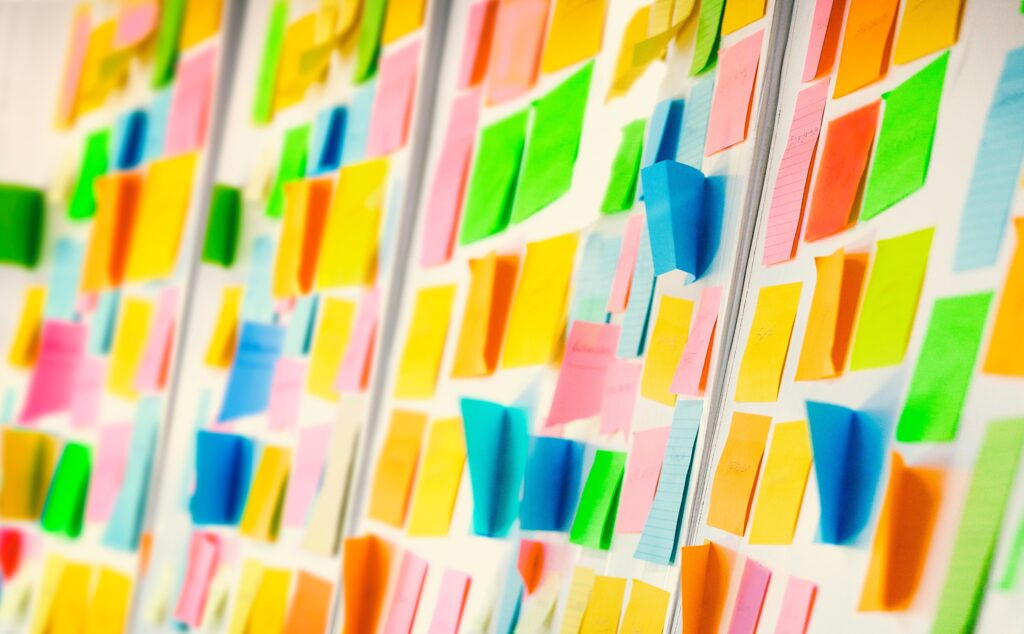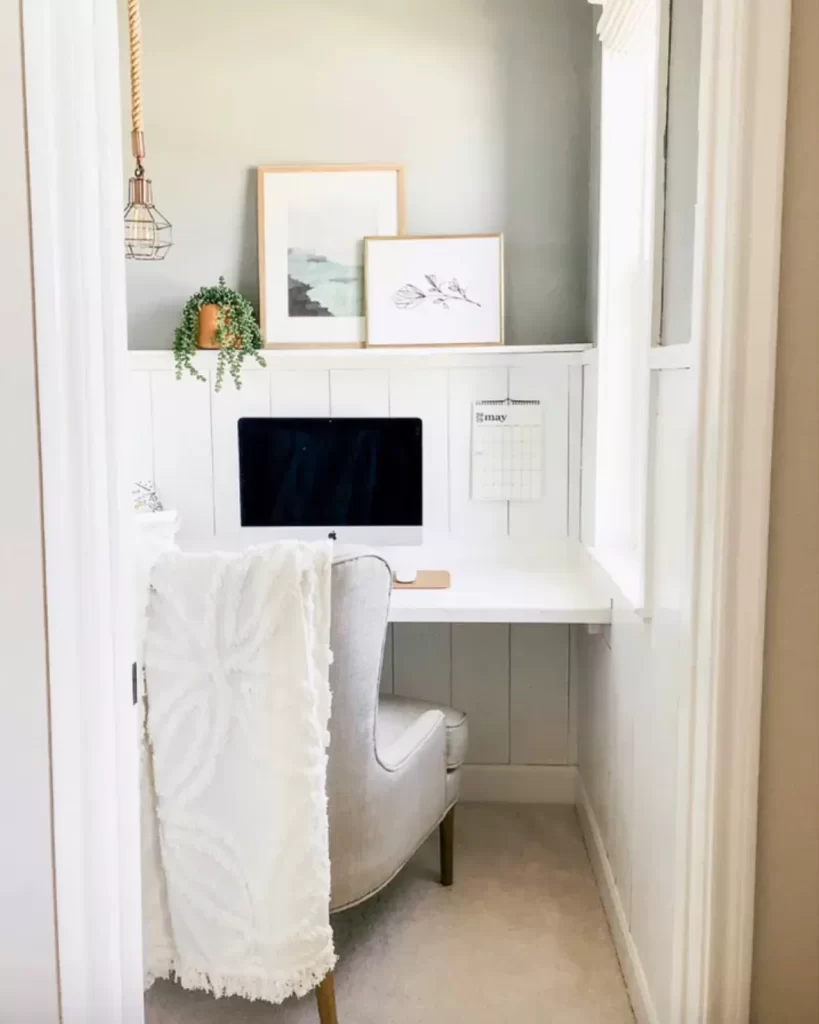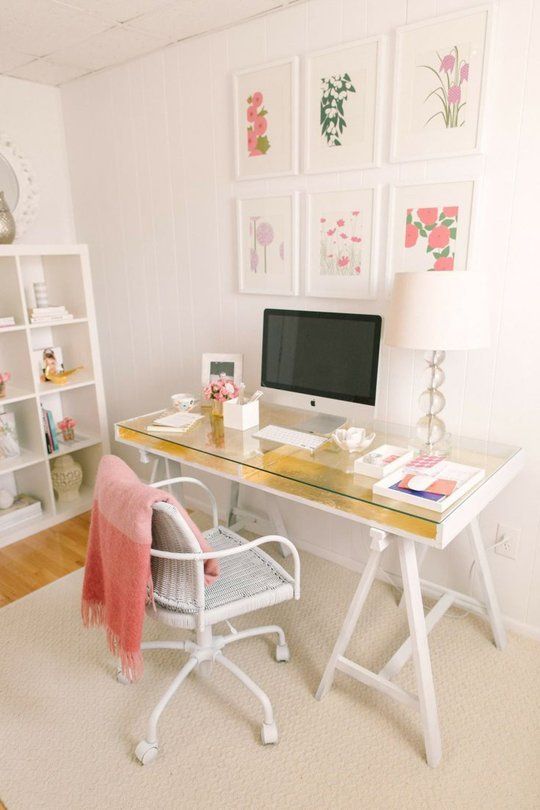Studies of professional decision-makers, whether they are executives, engineers, or healthcare professionals, share a similar approach to making decisions. They work in a way that optimizes the brain’s capacity to complete a deliberate decision-making process. Specifically, they work in a step-by-step approach, with each step supporting the next to develop specific outputs that become the inputs for the next step. In this way, they can complete the entire decision-making process by maintaining up-regulation of the deliberate decision system by the Anterior Cingulate Cortex. Staying up-regulated also means working in a way that minimizes the likelihood of down-regulation. The causes of down-regulation can be observed and measured making them easier to manage. With tools that identify the state of the activity of each system during decision-making, accomplished decision-makers can modify their approach and return to an up-regulated state if down-regulation occurs.
Accomplished decision-makers time and space to optimize deliberate decision making. They have specific times in their schedule blocked off that they dedicate to making complex decisions. Their calendar indicates that this is the time to think about the best solution. They also construct a space with the tools needed to make decisions and minimize distractions. It could be an office, a charting room, a library, or a corner of a coffee shop. They have somewhere to go, minimizing distractions to help them think about the best decision given the situation. In this way, they have optimized the decision-making time and minimized the external down regulators.
An essential characteristic of a decision space is security. The brain constantly scans the environment, changing what systems are available and more likely to work. The subcortex’s role is to stay safe and conserve energy. When this is satisfied, it is more likely to make higher-level thinking areas more available, which are required during deliberate decision-making. However, if the need for security is unmet, the brain’s lower regions will be active, and the higher areas will be inhibited or withheld. This makes establishing a safe area priority when creating a decision space.
When a need is unmet, the ACC and other brain areas will begin making a change through decision-making. Recall that we spend most of our time in the Automatic system, using the habits we have developed through prior experiences and learning to complete the need fulfillment of the day. Suppose this system is not getting the job done. In that case, the Deliberate system is activated, providing the opportunity to decide the best solution to move forward and learn better ways of meeting the needs now and in the future.
The goal of making better decisions is to manage the up and down regulations to provide the best opportunity for the decision-making areas of the brain to do their jobs. When allowed to work optimally, the likelihood of a successful decision that results in a commitment to a solution and then change and learning efforts progressing is increased. In addition to improving the likelihood of up-regulation by recognizing a struggling moment, minimizing the likelihood of down-regulation is also essential.

Down-Regulation
Down-regulation from the Deliberate System to the Automatic System results from several factors.
- Uncertainty and Fear: Internal triggers such as anxiety or fear can cause the ACC to revert to the Automatic System. When a person lives in a state of chronic stress, they will find it very difficult to change.
- High Emotions and Affective State: Emotional responses can prompt the brain to rely on automatic, less deliberate decisions. These can be both positive and negative emotions. Positive emotion programs seeking to “Get hyped up” for change can result only in temporary change, as the person will revert to their prior habits as this state triggers a Down-regulation.
- Time Pressure: External pressures like tight deadlines can push the ACC to make quicker decisions. The Deliberate system is time-consuming, and the ACC may Down-regulate to save time.
- Familiarity with Tasks: Familiarity may lead the ACC to rely on automatic responses instead of engaging the Deliberate System.
- Low Motivation: A lack of motivation can hinder the Deliberate System and promote down-regulation.
- Limited Cognitive Resources: Insufficient cognitive capacity can lead to the brain defaulting to the Automatic System. This can also include decision fatigue, mental exhaustion, physical illness, and the impact of age.
These states that trigger down-regulation can be external forces or internal changes. Our body chemistry and blood sugar levels can profoundly impact our capacity to maintain an up-regulated state. This means that the decision-making space should have access to water and snacks to maintain the necessary optimal internal environment. The best snacks for decision-making are the best sleep and exercise.

Measuring the Impact of Your Decision Space
The standards of measurement for your decision space include:
- Does it minimize the time for up-regulation?
- Does it minimize the likelihood of down-regulation by controlling for down-regulating causes?
Remembering that the Automatic system is largely subconscious, how can a person know that they have down-regulated? It is beyond conscious thought and can not be identified verbally by the decision maker. Instead, we must look to the behavior being demonstrated to determine if down-regulation occurred. The following are the behaviors associated with the Automatic system.
- Quick Decisions: Simplified decision-making that may need more thorough analysis can be error-prone.
- Reliance on Intuition: Over-dependence on gut feelings instead of deliberate assessment can lead to inaccurate reactions
- Simplified Reasoning: A tendency to ignore complexities and focus on straightforward solutions can minimize the need for a more robust solution
- Repetition of Previous Solutions: Reverting to familiar actions that may not apply to the situation
- Increased Reliance on Heuristics: Defaulting to mental shortcuts rather than carefully weighing options can result in the wrong standards of measurement
- Reduced Mental Effort: Prioritizing efficiency over accuracy can lead to errors.
- Resistance to Change: Hesitation or refusal to deviate from established patterns when the old ways no longer work.
- Emotionally Driven Decisions: Allowing emotions to guide decision-making rather than a process approach.
When a person demonstrates these behaviors, they are in the Automatic system. Being in the Automatic system is okay as it can reduce energy consumption.
The standard of measurement regarding the minimization of down-regulation are:
Does it minimize Uncertainty and Fear?
- In what ways are the internal triggers such as anxiety or fear managed?
- In what ways does the area manage chronic stress?
Creating a dedicated decision-making space and scheduling dedicated time on your calendar can help you stay in an up-regulated state and minimize down-regulation. Managing uncertainty and fear can create an environment conducive to thoughtful, deliberate decision-making. Here are five recommendations and examples to help you develop such a space and manage your time effectively:
1. Choose a Quiet and Private Space:
Find a private space, such as a home office or a quiet room, free from distractions and interruptions. This space should allow you to focus on decision-making without outside disturbances. Equip the space with comfortable seating and proper lighting to create a calm and inviting atmosphere.
Example: Set up a corner of your home office with a comfortable chair, a small desk, and a lamp for focused work. Decorate the space with soothing colors and personal items that inspire you.
2. De-clutter and Organize the Space:
A clutter-free environment promotes clear thinking and reduces anxiety. Keep your decision-making area organized and tidy to create a sense of calm and control. Store necessary tools and resources within easy reach.
Example: Use organizers and storage solutions to clear your desk of unnecessary items. Place essential tools such as a notebook, pen, and decision-making worksheets in a designated spot for easy access.
3. Set the Right Ambiance:
Create an ambiance that promotes relaxation and focus. Consider adding elements such as soft background music, scented candles, or calming artwork to set the mood for decision-making.
Example: Play instrumental music at a low volume while you work, or use an essential oil diffuser with calming scents like lavender to create a soothing environment.
4. Block Out Dedicated Decision-Making Time:
Schedule specific times on your calendar for decision-making sessions. This dedicated time allows you to focus solely on decisions without feeling rushed. Plan these sessions when you are most alert and least likely to be interrupted.
Example: Block out an hour in the morning when you feel most energized and clear-headed. Use this time to review your decision-making tasks and work through your decision pathway.
5. Prepare for Potential Stressors:
Anticipate potential stressors and take proactive measures to address them. For example, if a decision may involve uncertainty, gather information in advance to reduce ambiguity. Practice stress-reduction techniques such as deep breathing or meditation to calm your mind.
Example: Before a decision-making session, spend a few minutes practicing mindfulness or meditation to ground yourself. This can help you approach decisions with a clear and calm mindset.
Does it minimize High Emotions and Affective State?
- In what ways are both positive and negative emotions managed?
When creating a decision-making space and scheduling dedicated decision-making time on your calendar, it’s important to manage high emotions and affective states that may lead to down-regulation. Whether positive or negative, emotional responses can prompt the brain to revert to automatic decisions rather than deliberate ones. Here are five recommendations and examples to help you create a conducive environment and manage high emotions effectively:
1. Choose a Calming Space:
Select a space that fosters a sense of calm and tranquility. A peaceful environment can help you manage high emotions and maintain a balanced affective state. Opt for a room with soft lighting, soothing colors, and minimal noise.
Example: Transform a spare room or a corner of your home office into a calming decision-making space using muted colors, comfortable seating, and natural light. Add a white noise machine or soft background music to create a peaceful atmosphere.
2. Set Emotional Boundaries:
Before entering your decision-making space, take a moment to establish emotional boundaries. Acknowledge any strong emotions you may be experiencing and decide to set them aside during your decision-making session.
Example: Practice deep breathing or meditation for a few minutes before beginning your session. It can help you center yourself and focus on the decision at hand.
3. Use Stress-Relief Techniques:
Incorporate stress-relief techniques into your decision-making routine to regulate emotions and prevent down-regulation. Progressive muscle relaxation, guided imagery, or yoga can help you manage high emotions.
Example: Keep a stress-relief tool such as a stress ball or fidget spinner on your desk when you need to release tension.
4. Avoid Emotional Triggers:
Identify and avoid emotional triggers that could impact your decision-making process. It may involve minimizing exposure to emotionally charged media or conversations during your dedicated decision-making time.
Example: Turn off notifications on your devices and limit interactions with people who may evoke strong emotional responses during your decision-making session.
5. Practice Emotional Reflection:
Reflect on your emotional state before and after decision-making sessions. This self-awareness can help you recognize patterns and adjust your approach as needed.
Example: Keep a journal to track your emotional state during decision-making sessions. Note any changes in mood or emotional triggers and reflect on how they may have affected your decisions.
By implementing these recommendations, you can create a decision-making space that promotes emotional balance and supports deliberate decision-making. Managing high emotions and affective states can help you maintain up-regulation and make more thoughtful, intentional choices.
Does it minimize Time Pressure?
- In what ways are time pressures managed, realizing that the Deliberate system takes extra time?
To help manage the down-regulation caused by time pressure, creating an environment that supports deliberate decision-making while setting aside dedicated time to focus on decisions without external pressures is essential. Here are five recommendations and examples to help learners develop a space and block out decision-making time on their calendar to manage time pressure effectively:
1. Create a Dedicated Decision-Making Zone:
Designate a specific area in your home or office for decision-making activities. This space should be free from distractions and external pressures so that you can focus fully on the decisions at hand.
Example: Set up a desk or work area away from high-traffic zones in your home. Use soundproofing materials or noise-canceling headphones to minimize external noise and interruptions.
2. Schedule Decision-Making Time:
Block out specific times on your calendar for decision-making sessions. This dedicated time allows you to focus on decisions without feeling rushed or pressured by other obligations.
Example: Reserve an hour in the morning or early afternoon when your energy levels are high for your decision-making sessions. Treat this time as an essential appointment that you must not reschedule.
3. Set Clear Priorities and Goals:
Define your priorities and goals for each decision-making session. Knowing your goals can help you stay focused and manage time more effectively.
Example: Create a checklist of decisions you want to address during your session. Rank them in order of importance to ensure you tackle the most pressing issues first.
4. Limit External Interruptions:
Reduce potential interruptions by informing others of your decision-making time and setting boundaries around it. This can help you maintain focus and minimize the risk of downregulation due to time pressure.
Example: Let your family members or colleagues know when you are in your decision-making session, so they understand not to disturb you unless necessary. Turn off email and phone notifications during this time.
5. Practice Time Management Techniques:
Use time management techniques, such as the Pomodoro Technique or time blocking, to structure your decision-making sessions and maintain a steady pace.
Example: Use a timer to break your session into focused intervals (e.g., 25 minutes of work followed by a 5-minute break). It helps you maintain a sense of urgency without feeling overwhelmed.
By implementing these recommendations, you can create a conducive environment for decision-making and manage time pressure effectively. These strategies will help you stay on track, minimize the risk of down-regulation, and maintain up-regulation in your decision-making process.
Does it minimize the perception of Familiarity with Tasks?
- In what ways is familiarity managed by providing context to usual activities?
Low motivation can make it challenging to engage the Deliberate System, causing the brain to revert to the Automatic System, which may lead to less thoughtful decision-making. To counteract this, creating a decision-making environment that fosters motivation and keeps you engaged in the Deliberate Pathway is essential. Here are five recommendations and examples to help learners develop a space and schedule dedicated decision-making time while managing low motivation:
1. Set Clear Goals and Intentions:
Clearly defined goals provide direction and purpose, boosting motivation. Display your goals and intentions prominently in your decision-making space.
Example: Create a vision board or use a whiteboard to outline your goals for each decision-making session. Refer to this board regularly to stay focused and motivated.
2. Incorporate Personal Motivators:
Surround yourself with elements that remind you of your reasons for making decisions. It can be achievements, positive feedback, or other motivational items.
Example: Keep a folder with notes or messages of appreciation from colleagues or friends. Revisit these whenever you feel your motivation waning.
3. Use Reward Systems:
Introduce a system of rewards for completing decision-making tasks. It provides immediate positive reinforcement for engaging with the Deliberate System.
Example: After reaching a decision-making milestone, treat yourself to a favorite snack, a short walk, or a break. This helps reinforce your commitment to the process.
4. Create a Comfortable and Inspiring Environment:
Your decision-making space should be comfortable and inspiring. Choose colors, lighting, and furnishings that energize and help maintain focus.
Example: Use warm or natural lighting in your space, and incorporate plants or artwork that resonate with your taste and inspire you.
5. Involve Accountability and Support:
Share your decision-making plans with a partner, friend, or mentor who can hold you accountable and provide support. It adds an external layer of motivation.
Example: Schedule regular check-ins with a trusted individual to discuss your progress and challenges. It can help you stay motivated and committed to the process.
By incorporating these recommendations into your decision-making routine, you can create an environment that boosts your motivation and keeps you on track to engage the Deliberate System. It will lead to more thoughtful and practical decisions over time.
Does it minimize the impact of low motivation?
- In what ways is motivation managed throughout the work cycle?
Low motivation can make it challenging to engage the Deliberate System, causing the brain to revert to the Automatic System, which may lead to less thoughtful decision-making. To counteract this, creating a decision-making environment that fosters motivation and keeps you engaged in the Deliberate Pathway is essential. Here are five recommendations and examples to help learners develop a space and schedule dedicated decision-making time while managing low motivation:
1. Set Clear Goals and Intentions:
Clearly defined goals provide direction and purpose, boosting motivation. Display your goals and intentions prominently in your decision-making space.
Example: Create a vision board or use a whiteboard to outline your goals for each decision-making session. Refer to this board regularly to stay focused and motivated.
2. Incorporate Personal Motivators:
Surround yourself with elements that remind you of your reasons for making decisions. It can be achievements, positive feedback, or other motivational items.
Example: Keep a folder with notes or messages of appreciation from colleagues or friends. Revisit these whenever you feel your motivation waning.
3. Use Reward Systems:
Introduce a system of rewards for completing decision-making tasks. It provides immediate positive reinforcement for engaging with the Deliberate System.
Example: After reaching a decision-making milestone, treat yourself to a favorite snack, a short walk, or a break. This helps reinforce your commitment to the process.
4. Create a Comfortable and Inspiring Environment:
Your decision-making space should be comfortable and inspiring. Choose colors, lighting, and furnishings that energize and help maintain focus.
Example: Use warm or natural lighting in your space, and incorporate plants or artwork that resonate with your taste and inspire you.
5. Involve Accountability and Support:
Share your decision-making plans with a partner, friend, or mentor who can hold you accountable and provide support. It adds an external layer of motivation.
Example: Schedule regular check-ins with a trusted individual to discuss your progress and challenges. It can help you stay motivated and committed to the process.
By incorporating these recommendations into your decision-making routine, you can create an environment that boosts your motivation and keeps you on track to engage the Deliberate System. It will lead to more thoughtful and practical decisions over time.
Does it minimize Limited Cognitive Resources?
- In what ways can insufficient cognitive capacity, such as that related to decision fatigue, mental exhaustion, physical illness, and the impact of age, be managed?
The brain may default to the Automatic System when cognitive resources are limited. It can lead to decisions made without careful consideration. Creating an area and schedule for decision-making that helps manage these causes can aid in maintaining up-regulation and deliberate decision-making. Here are five recommendations and examples to help learners develop an optimal decision-making space and time:
1. Optimize Cognitive Energy:
Ensure your decision-making space supports cognitive efficiency by minimizing distractions and streamlining your environment.
Example: Remove unnecessary clutter from your workspace and use organizers to keep frequently used items within easy reach. It helps conserve cognitive energy when making decisions.
2. Prioritize High-Energy Times:
Block out decision-making time when you feel most alert and energetic. Scheduling tasks when you’re naturally at your best can enhance cognitive capacity.
Example: Schedule decision-making sessions in the morning if you are a morning person or later in the day if you are more focused in the afternoon.
3. Take Regular Breaks:
Avoid decision fatigue by incorporating regular breaks into your decision-making schedule. Short pauses allow your brain to recharge.
Example: Set a timer for focused work sessions of 25–50 minutes, followed by a 5–10 minute break to rest your mind.
4. Hydrate and Fuel Your Body:
Proper hydration and nutrition support cognitive function and sustain mental energy throughout your decision-making sessions.
Example: Keep a water bottle nearby and have healthy snacks available to maintain consistent energy levels and avoid dehydration or hunger.
5. Incorporate Relaxation Techniques:
Practice relaxation techniques before starting a decision-making session to help calm your mind and increase cognitive resources.
Example: Before making a decision, use mindfulness exercises, deep breathing, or a quick meditation to center yourself.









By implementing these recommendations, you can create an environment that supports cognitive efficiency and resource management. This will help you maintain upregulation in your decision-making process and make thoughtful choices despite limited cognitive resources.
Ready to Start making better decisions?
